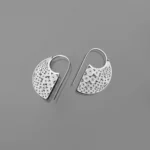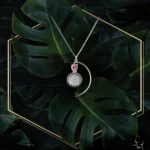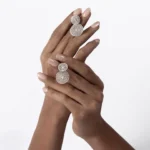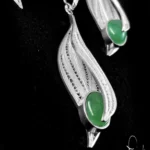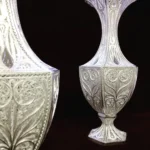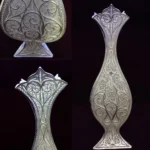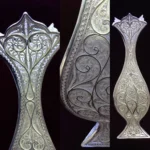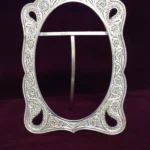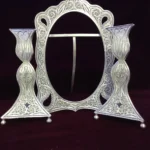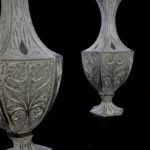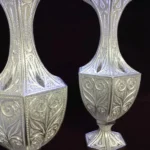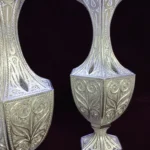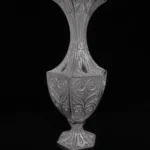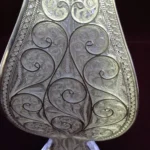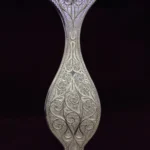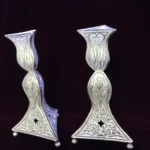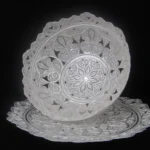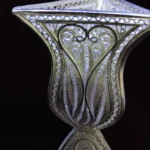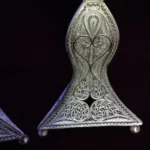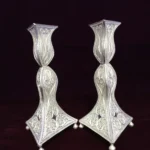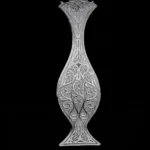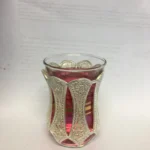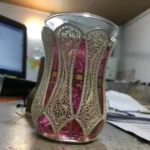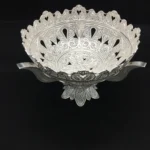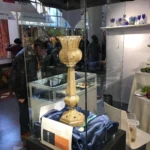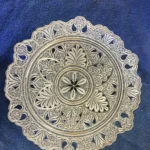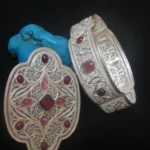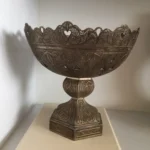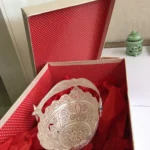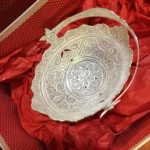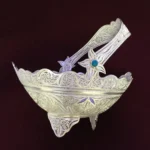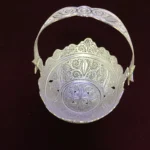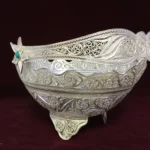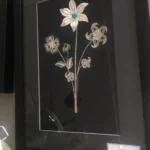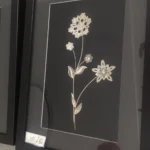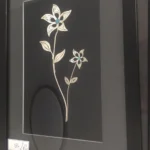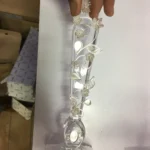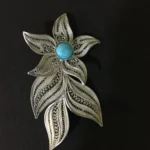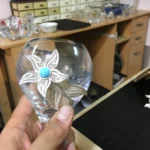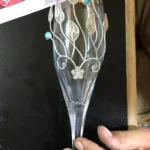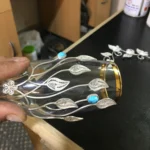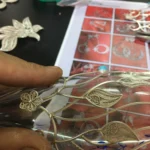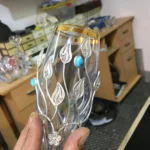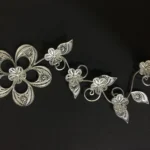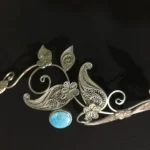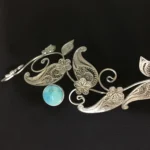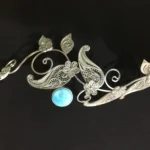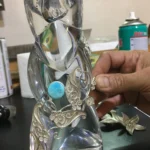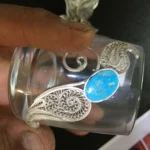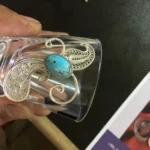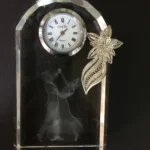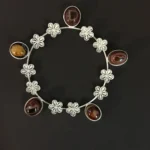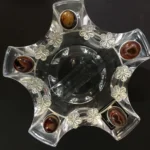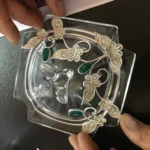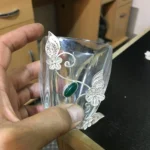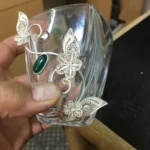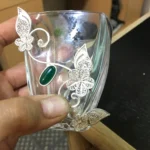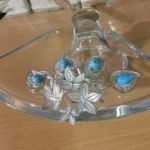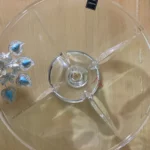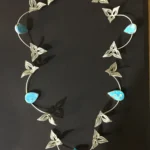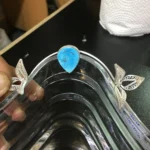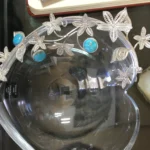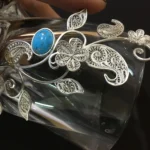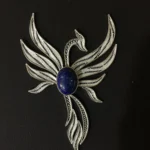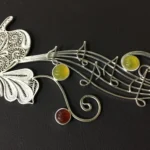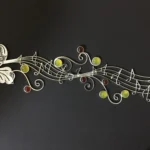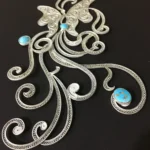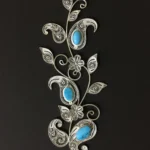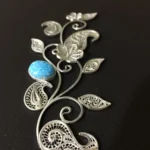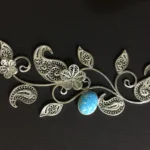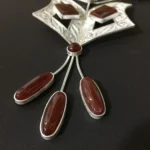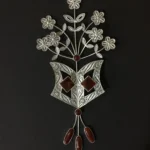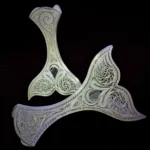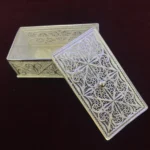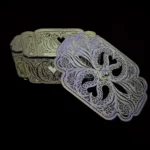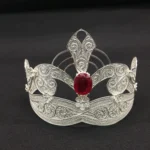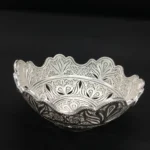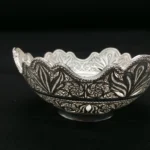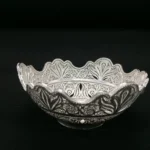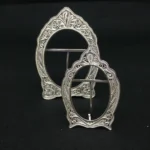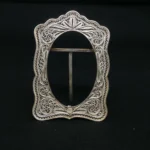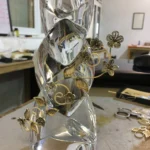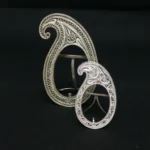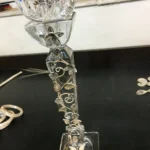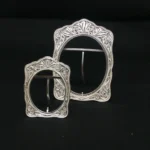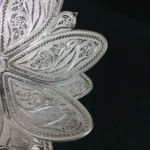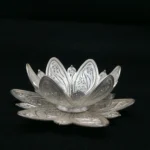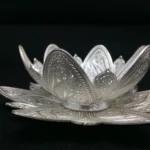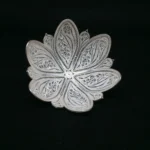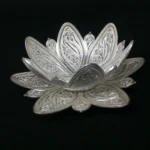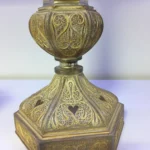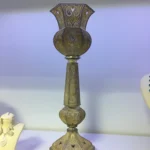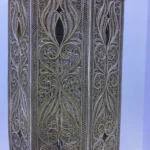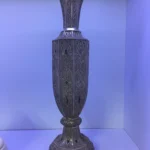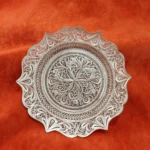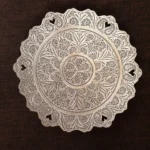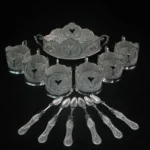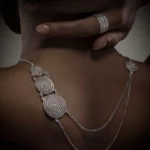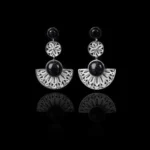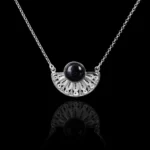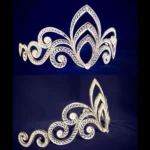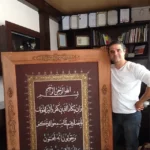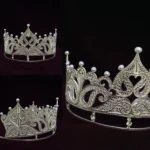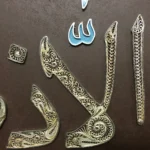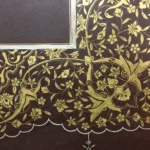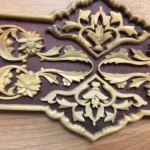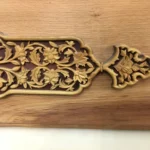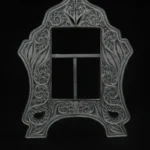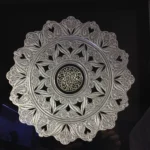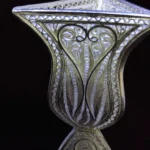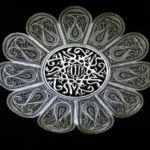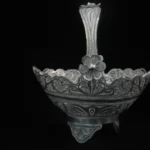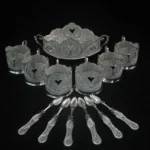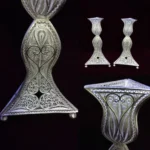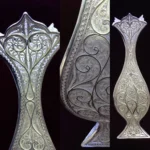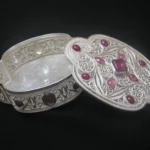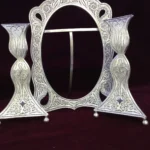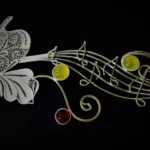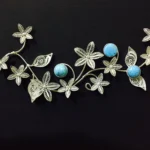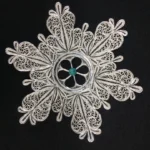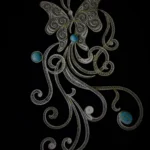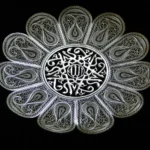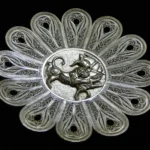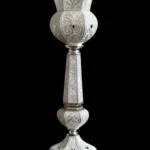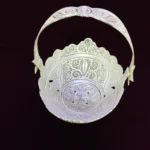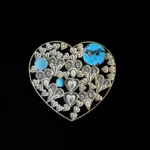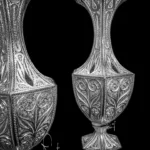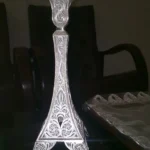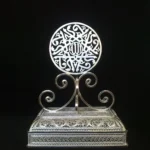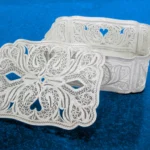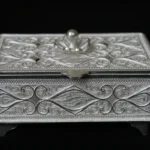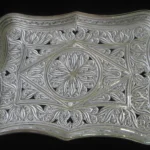Filigree Artist
Craftsman
Silver Artwork
Iranian Artwork Expert
No products in the cart.
Born in 1976, Iran, since about 1990, working, learning, creating, teaching, raising artists, attending national and international fairs, introducing Zanjan’s filigree to the world, pushing the limits of the art, designing and performing some of the biggest and most complex pieces of filigree, challenging his own abbilities and the art’s possibilities, mastering many side-arts and skills to filigree, which are independent arts by themselves, holding many national and international art and specifically filigree titles,... has had been being Mohsen Yazanshenas so far.
A Brand in Action
EXPERIENCE and EDUCATION
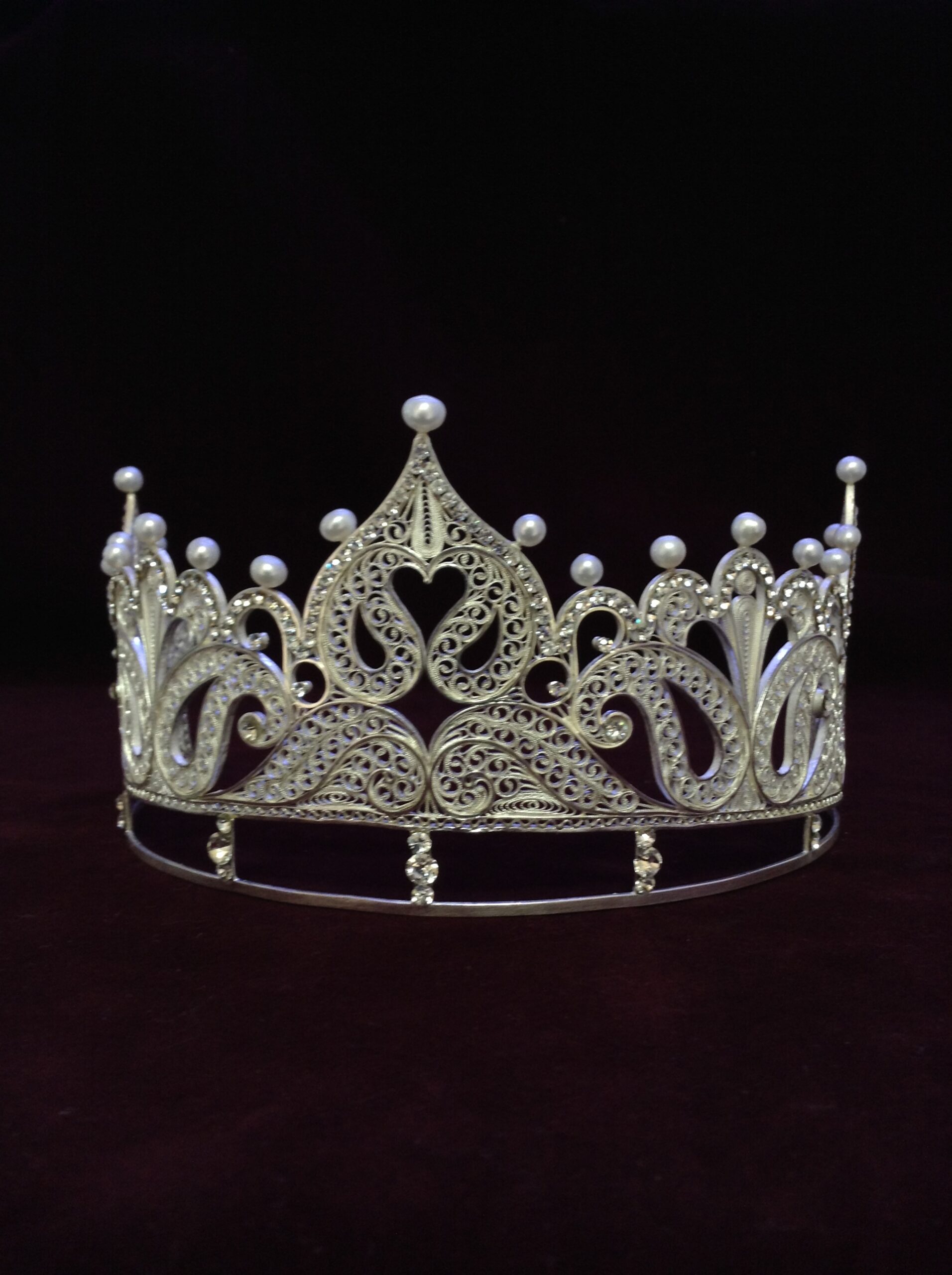
Mohsen Yazdanshenas, master of filigree, active and working in this field of art since 1990. In 2008, 2010 and 2012 he acquired three UNESCO Awards of Excellence and in 2016 he acquired First Degree of Art equivalent to PhD of Art, from the the Ministry of Culture and Guidance of Iran.
Between 2010 and 2020, he participated in more than 85 exhibitions in Iran, Oman, Germany, Italy, Greece, Brazil, Hong Kong, Thailand, China, Lebanon, Kuwait, Singapore and Japan.
1. Shiraz National Garden Exhibition 2001
2. Vesal Shirazi Gallery Exhibition 2002
3. Tehran Jewelry Exhibition 2003
4. Tehran Jewelry Exhibition 2007
5. National exhibition of the best handicrafts of Tabriz 2008
6. Caspian carpet exhibition in Zanjan 2008
7. Jewelry Exhibition, Greece 2010
8. Tehran Handicrafts Exhibition, Golestan Palace, 2010
9. Tehran International Handicrafts Day Exhibition 2011
10. China Special Trade Board 2012
11. Cultural week of Iran and Kuwait, Tehran 2012
12. Special exhibition of Iran, Beirut, Lebanon 2012
13. Tehran International Handicraft Day Exhibition 2012
14. International Exhibition of Fine Nanchang Handicrafts, China 2012
15. Handicrafts Exhibition of Guiyang, China 2013
16. Handicrafts Exhibition of Chengdu, China 2013
17. Animation and Handicrafts Festival of Luoyang, China 2013
18. China gold and jewelry exhibition 2013
19. Gold and Jewelry Speciality exhibition in Tehran 2012
20. Kunming Exhibition, China 2013
21. Exhibition of Handicrafts Speciality of Chengdu, China 2013
22. Handicrafts Exhibition, Milan, Italy 2014
23. Kunming Handicrafts Exhibition, China 2013
24. Artigiano Exhibition, Milan, Italy 2013
25. Brazil Cooperative Exhibition 2013
26. Kunming handicrafts exhibition, China 2014
27. Singapore Jewelry Exhibition 2014
28. Handicrafts Fair, Berlin, Germany 2014
29. Hong Kong Jewelry Exhibition 2016
30. Kunming Exhibition, China 2016
31. Thailand Jewelry Exhibition 2016
32. Handicrafts Exhibition of Shenzhen, China 2016
33. Gold and jewelry exhibition, Ningxia, China 2016
34. Tehran Gold and Jewelry Exhibition 2016
35. Oman Festival Exhibition 2017
36. Kunming Exhibition, China 2016
37. Jakarta Indonesia Handicrafts Fair 2017
38. Gift Show exhibition, Japan 2018
39. Inner Mongolia Exhibition, China 2018
40. Exhibition of Shenzhen, China 2018
41. Handicrafts exhibition, Xi’an, China 2018
42. Shanghai Silk Road Exhibition, China 2018
43. Silk Road Exhibition, Wenzhou, China 2018
44. Kunming Exhibition, China 2018
45. Tehran Handicrafts Exhibition 2019
46. Attending Shanghai Municipal Museum 2018
47. Attending Iran’s National Pavilion in China, 2016 and 2018
48. Anhui Exhibition, China 2018
49. Shanghai CIIE Exhibition
50. China Silk Road Exhibition 2018
51. Beijing Jewelry Exhibition 2018
52. Beijing Tourism Exhibition 2018
53. Exhibition of handicrafts of Asian civilizations in the National Book Museum, Beijing 2018
54. Xi’an Exhibition, China 2018
55. Kunming Exhibition, China 2018
56. Hefei exhibition, China 2018
Artistic Titles and Activities
1. Decoration of gate of the Royal Aal-albayt Mosque in Oman
2. Personal exhibition, Oman in 2018 and 2018
3. Artistic activity in Oman
4. Award of Excellence of UNESCO, 2008, 2010 and 2012.
5. National Handicraft Award in 2012
6. Second place of best selling booth in Tabriz exhibition, 2017
7. Certificate of appreciation from the head of Cultural Heritage, 2008 and 2010
8. Certificate of appreciation from the governor of Zanjan, 2009
9. Certificate of appreciation from Radio Javan Iran, 2013
10. Certificate of appreciation as the best entrepreneur of Zanjan province, 2013
11. The best entrepreneur of Zanjan province, 2013
12. Making commemorative emblems of the Soltanieh dome on the order of the cultural heritage of the province as gifts to the high rank official guest
13. Production of 150 filigree gifts ordered by cultural heritage to be given to ambassadors participating in Nowruz celebrations 2010 and 2011
14. The best artist of 2012 and 2014 in Zanjan province of Iran
15. The best artist of Iran in June 2013
16. Construction of Pirgholaman memorial by the order of Ardabil province of Iran, 2013
17. Certificate of appreciation from the Planning and Budget Organization of Zanjan Province, Iran
18. Teaching at Tabriz Art Faculty, 2012-2013
19. Teaching at the Faculty of Islamic Arts, Surah University, 2013-2014
20. Teaching in private schools
-
Filigree
-
Copper Chiseling
-
Toreutics
-
Gold and Silver Molding
-
Marquetry
-
Persian
-
Azerbaijani
-
English

THE SHINY FILIGREE OF ZANJAN IN SHANGHAI
When he talks about filigree, silver, art, work and Zanjan, he is full of energy and life. He is obviously in love with all the combination, since his first sentences he gives that away. His high self-confidence, presentation style of his art, and the fact that he emphasizes on the independence of his work from outside helps, are great indications of his mastery. He is an entrepreneur and opportunity creator and doesn’t need to use any certain leagues’ membership to seek promotion of any kind. He is the embodiment of Saadi’s maxim, that says: “Man of art will be appreciated and be seated on the top situations, whereto he goes.”
On March 1st 2018 we (CRI Persian) had the chance to talk with Mr. Mohsen Yazdanshenas at a hotel on the sidelines of the conference and the opening ceremony of the Iran Trade Center in the free zone of Wai Gaoqiao, Shanghai.
– Please introduce yourself to our audience and tell us about your life and art.
– I am Mohsen Yazdanshenas, born in 1976 and I have been active in my main branch of art which is filigree for almost 27 years until now. In 2016 I received PhD of art from the Ministry of Culture and Science with the signature of the ministry. I am among few people who have the first-degree diploma of Iran in this field. Filigree is an original arts of Iran which dates back until 2300 years ago and interestingly the proof of this is the No. 4 “Salt man’s” earring, which was discovered in my hometown Zanjan.
I encountered with this art in 1990 in a very special way and completely by accident and fell madly in love with it. So much so that I left my school the same year to continue my education in the evening classes, so that I can continue working in this field. Three years after starting my work, I entered the Iranian art community. I managed to be well known, and by the age of 18 I built up a good reputation among the filigree artists of Zanjan. In 2007, I was invited by a goldsmith company in Oman to make two special works for Sultan Qaboos and I resided there for two years. I made a vase and a candlestick. There are only two samples of that candlestick, one of which is in the country of Oman and the other one right now is here in the commercial center of Iran in Shanghai. This candlestick is kind of a certificate to my work, so much so that if you show its photos to filigree experts, they will easily recognize them as my work. This candlestick was ordered by the Royal Jewelry company to offer as a gift to Sultan Qaboos. Its design and construction took about 14 months. It is made of 20,000 small pieces of silver and the two candlesticks have no third in the world. The work was very well received in Oman, where, during their construction I held filigree teaching courses too. In 2001 I personally attended toreutics courses in Shiraz, for I thought this field of silver related art also can uplift my skills in my master field.
– Would you please explain a little more about toreutics?
– Toreutics is the artistic form of engraving designs on gold and silver pieces by hammering a nail or a delicate chisel on them. In Iran, people are more familiar with the art of “metal chiseling”, but all its artists need a container to present his work on it. Those containers are made by toreutics artists. It is like “copper chiseling” art in Zanjan, only on silver.
I should mention my dear teacher, Mr. Sadeq Shirvani, who had great deal in bringing me up in this field and I owe him dearly in this path.
– What has been done to introduce filigree of Zanjan to foreign audience in Iran and what you personally have achieved?
– The roots of the filigree art are in the city of Zanjan. We were able to receive our first certification from the UNESCO in 2017 and the art was registered in the organization. In 2010 and 2011, we received the relevant medals from the organization three times in a row, which was very helpful. One of my works is in Isfahan Museum and another one in the museum of UNESCO. Since 2006, I have started to participate in foreign fairs, both in Europe and Asia. In 2018, we went to Beijing with a business delegation, where I realized that I could transfer this art to China. In this idea I faced some objections, for some believe that the art and ideas would be can be copied, but I personally do not believe so, because no matter how much an artist’s work can be imitated, if he has ideas of his own to present, he can keep himself updated. I am not afraid of this issue. I look at this work from the artistic point of view. Filigree is an art as well as a craft. I made huge advancements in its artistic side and was able to make a foothold in Iran. I made many innovative designs in it and later visited different countries. In Europe, I first visited Greece, then Spain and Germany. In our show in Germany, the where the head of the fair was impressed with my work so much that he suggested to hold a one-week special show in Berlin by the invitation of the German government.
My familiarity with the residential art villages led me to think about implementing this idea in Zanjan, meaning to create a center so that we can invite metal art enthusiasts of Europe to educational short-term courses, so that people from different background can attend not necessarily as an artist of the field, but as tourists who are willing to experience the art in the making firsthand; Whether they are photographers, psychologists, or sociologists, so that in their turn, they can touch the art from their own point of view and introduce it in their home countries, to the audience of their cultures and languages.
For the international presentation of the art, we have cooperated widely with the Press TV, Iran’s English language news network and in the last five years, we have participated in production of seven documentaries in our workshop, which were aired on this TV network and the iFilm network. Last year, we presented the art and our capabilities in a documentary by the of “Iran, city of Zanjan”.
Since my first arrival in China in 2008, I have very much liked the atmosphere and continue visiting this country five or six times a year, where we participate in various fairs. This time, they assigned us the central part of the Iran’s business center. We hope this will be a new step in the introduction of Zanjan’s filigree art in China.
– Has there been any special approach toward introduction of Zanjan’s filigree in Chinese language for the Chinese enthusiasts, on the Internet for example?
– In most of the exhibitions that we have attended so far, considering that our works are interesting and attractive to the local people, photographers and videographers have come and done their recordings. From the point of view of familiarity of the non-Iranians, we should know that the filigree art has existed around the world, but the important point is that Zanjan’s filigree art is the zenith of its technique; so much so that 8 centuries ago when a polish tourist was passing Zanjan, described Zanjan’s filigree “as the peak of all metalworking art, that he has ever seen; and at that time, this art and its luxurious productions were dedicated to the kings and nobility. The filigree works of Zanjan are so delicate that if you blow on them, they might collapse.” His point referring to the elegance of this art in Zanjan. It is safe to say that filigree is the most delicate art done on metal.
– Is there filigree or another art like filigree in China?
– Filigree is being taught in Peking University as an independent field. Two years ago, three masters of the art from Beijing were introduced to me by some friends that I had met during my travels to China. They came to Zanjan. To my surprise both were professors of filigree and one of them had PhD. in this field, which shows the importance of the art in China.
In Europe, Thailand and Indonesia, relatively very little work is being done in the field, which is usually on small pieces and scales, while we in Zanjan create big pieces of utensils in very beautiful and delicate accuracy. This style is specific to Zanjan filigree art.
You emphasize more on the artistic aspect of filigree in Zanjan, but when it becomes an international business case, do you think Iran and specifically Zanjan alone are able to provide for markets as big as China? For example, if the demand of the filigree works become suddenly tenfold, do we have the supply capacity?
In the past years in Zanjan, many people have been trained in Zanjan’s handicraft industry and are ready to enter the market. Since the Zanjan filigree production has been relatively exclusive and has had secretive know how, there was no basis for mass production, but I feel that in the last few years, considerable progress has been made in terms of quantity. The carpet market would be a good analogy. While machine -made carpets and its industry for consumption are growing and thriving, the hand-woven carpets and its art are also going their own way. Our activities are mostly concentrated on the artistic aspects of filigree and its introduction. About the commercial part of the sector, it may not be fully ready now, but it is certainly possible to train those who are interested and increase their capacity to the required level within six months to one year.
– Is it possible to industrialize and mass produce the filigree works in large quantities for foreign tourists consumption? What has been done in this regard?
– In Isfahan, some have attempted to industrialize the filigree works. They cast the form with copper and then silver coat it later, which is possible to make in large quantities.
– Is there any similar practice in Zanjan?
– It does not exist in Zanjan. Zanjan artists believe that if they lower their silver’s purity even just down to 98%, it is considered as betrayal to the art. They do not work on metals other than gold and silver. This art can be done with three metals: gold, silver, and copper. All over the world, they use 92.5% standard silver, which is called Sterling silver. The only filigree silver which is 100% and pure, is the silver of Zanjan filigree. The reason is that it is very difficult to work with 100% pure silver. One of the top techniques in Zanjan is the silver welding technique, which only works on 100% silver. This technique is specific to Zanjan and they do not reveal it in any way. The formula of its raw materials belongs to two families, and they keep it well. In this welding technique, non-experts cannot tell the back and front of the work. My point being, it is possible to do both mass production and luxury artistic business, but to represent our own culture, we need to think about education.
What is the ratio of added value of filigree works?
– The ratio of the added value of the commercial works is 3 to 1 and it is 50 to 1 for the artistic and luxury works. That is, the final price is a factor of the value of the used materials to these ratios. For works of art, it sometimes may reach up to 100 percent.
– Is there any estimation about the number of people interested in filigree in Iran?
– The number is growing in Iran. Fortunately, with the help of the activities that we have had to introduce the art and skill, especially the documentaries made and aired in the last couple of years, also the numerous fairs that were held, more and more people are interested in this art and more people in Iran have known that the best filigree of the country belongs to Zanjan. God willing, in 2019 Zanjan officially will be introduced as the global city of filigree. We have increased our activities in this direction for about two years already and fortunately, last year, with the help of cultural heritage organization, we were able to gain 25 national medals for Zanjan’s filigree. The high added value, high authenticity of this art and its other numerous advantages have made more people interested, so much so that it can become a big part of Iran’s non-oil exports.
– Regarding the provision of the original material of the art, namely silver, won’t be any problem in supplement for big markets?
– No. Anguran silver mine, which is the largest silver mine in the Middle East and even might be the biggest in the world, is in Zanjan, from where each year large amounts of silver are extracted. I think there won’t be any problem in this regard.
After getting to know the Chinese market well, what is your advice and suggestion to your colleagues in Iran to attract Chinese customers?
– In the last five years, I have been to China about 26 times and very well received in every city I have visited. My advice to my colleagues is to present very high-quality work to the Chinese market, because this is first of all important for us and our work’s introduction and recognition. They should not be afraid of entering foreign market. The fear of having our works being copied and imitated, will not allow us to enter global markets as a big business. Here is an example: the four people who came to Zanjan, they had specifically come to investigate filigree in our workshop. Without any fear, we showed them all stages of the work and the workshop, except one or two welding stages, and they took pictures of all the steps. That day, I had no fear that they would copy my works, because I am familiar with their techniques. Their techniques are similar to our techniques, but it has its own limits and can never reach Iran’s and especially Zanjan’s.
– What are your other personal activities in the field of filigree?
– I am active in fifteen fields of craft and art. I have taught for four years in Islamic arts faculties in Tabriz university and Surah university in Tehran. In 2019, we will establish handicrafts field especially field of filigree in Zanjan University.
– If the art’s Zanjan style is welcomed in China, should they refer to those two families to supply the raw materials for welding?
– Yes!
Can this also bring a high added value?
– Sure! Today, the world is moving in a direction where the value of services is more than goods. After selling the goods, providing after sales services is very important. In the case of filigree, you can name welding and repairment of delicate goods, which have been damaged as few types of after-sale services thus sources of work and income.
Another important point in introducing our culture is that many activities that apparently are unrelated can affect each other and we should consider in our activities. For example, at the exhibition in Berlin, I realized that many people visited Thailand’s booth, which was in front of our booth, with more enthusiasm, because Thailand is a tourism country and people from all over the world travel there easily, eat Thai food, so they are more familiar with this country and its culture. They have more memories from this country. While people who visited our booth were mostly those who had been familiar with Iran and its culture from long ago and knew our art and culture from before but had not much recent contact.
– If I understand correctly, you mean for introducing one branch of our art and skills, it is better that different interested sectors join hands and cooperate in introducing Iran to the whole world?
– We need to introduce our work. One of the ways to present our country’s art to the people in other countries and make it profitable is to present filigree or any other skill through temporary workshops. I have had proposals from the Netherlands and UK, and I hope from next year on I will have 10–15-day introduction courses every three or four months in those countries. I paid $500 for a one-day course to learn stone cutting skills in Switzerland. We can do the same thing. Namely providing courses for enthusiasts of filigree in Iran or in their own countries with the cooperation of municipalities, universities, art centers etc.
In Oman, I first held a course for four to five months with the help of Omani handicraft institutions and taught Zanjan style filigree to about five people. In other words, in addition to the project that I was in charge, I trained there, and this made many more people interested in the art. If we continue to be afraid that others will learn the skill and eventually become our competitors, we will limit ourselves. We are the ones who should be updated every day. If we think that we are at the highest level and no one else is around us, we have in fact stopped and we just don’t know yet. We need challenge to progress, and we have challenges if we have rivals.
– What do you think is the source of this fear and worry?
– First is traditional mindset. Second is the wrong view upon handicraft industry at the government levels. The result is that neither the worker’s job nor the employer’s effort and investment is appreciated, and they are not well protected by insurance or financially. In Iran’s case, unfortunately, different governments have always thought that they can create a job in handicraft industry by about $500-600. This idea puts a lot of pressure on the handicraft sector, the only goal for the governments being to increase the employment statistics. A factory in Iran can use governmental credits up to $9 million, which can eventually employ 15 people, while the same governments offer a $1000 credit to craftsmen and oblige them to hire 5 to 10 people. This is ridiculous. No one would believe you can create a decent job by $1000 credit, let alone 10 to 15 jobs, Because this kind of jobs definitely will not be permanent. Eventually those kind of loans are not spent in the right place and they usually go for paying back some debts, buying car or other commodities, buying jewelry, etc. As you see the overall approach to the handicraft industry is wrong.
Fifty years ago, there was no such thing as handicrafts industry in Iran. People usually were known by their work, and they were artists in their field. A carpenter was a carpenter, and a person like me was known by filigree. After creation of the title of handicraft industry, a misconception around it also appeared, namely people usually think of craftsmen as if they are just sitting in a dark and dirty cellar or other small place and works hard only for food. I believe to make handicrafts industry more productive and profitable, it should be supported and presented to the world in its best and most glorious form.
– What is the difference between European markets and Chinese markets?
– In China, a lot of importance has been given to the packaging culture. Sometimes you can see that the value of a package is more than the good inside. Also recently, in China, people appreciate more and more luxurious and exquisite works of art and lifestyle.
Do you think this culture and work style can be transferred to Iran?
– Sure, it can, but it needs a huge effort. Currently we are just addressing the problem. We are yet to see any practice in renovation our packaging culture. I believe, there is no problem if we get help from other countries at least in the beginning. Slogans and essays will not help. Like in the case of making local mobile phone, that we tried, and it failed. Regarding the packaging industry, I think it is not necessary to do all the work in Iran. It is possible to use the technology in China, like many other countries and globally known brands that have moved their production centers to China. The same mistake is being repeated about stone cutting art. Currently, a false market for stone carving and stone cutting has been created in Iran, while we know that in this art, we will never reach the Indians, Thais, and Chinese. The Chinese people are interested in anything that evokes form in the mind. They are deeply into the energy of objects and materials and the art of feng shui.
– Please explain about the facilities and legal obstacles that exist for the production and presentation to the Chinese market.
– In all the trips we have made to China, we have always imported our goods as passengers, and have faced a lot of problems in Iran, while we had no problems in China. The reason for the facility in entry to China is that our artistic and luxurious filigree goods are rare, while taking gold and silver out of Iran has lots of legal problems and obstacles. Legally, each passenger cannot take out more than three kilos of silver and this is a big obstacle in front of our international business.
– The incentives for export of handicrafts are not helpful?
– There are no export incentives for gold and silver.
– What can be done to tackle this problem? What happens if foreign tourists, for example Chinese tourists make big purchases in Iran?
– One of the problems we have always had in Iran customs is just this one. There have been lots of discussions, but no results have been reached so far. I think we should appreciate if a Chinese customer purchases 5 kilos of filigree work! If a tourist buys twenty or thirty kilos of filigree work in Thailand or Türkiye, and wants to take it with himself, they not only won’t prevent him, but even would thank him. It is ridiculous that a tourist cannot take more than two carpets, or three kilos of filigree work out of Iran. Currently if a tourist purchases five kilograms of silver filigree, he won’t be able to take it with him, and the custom will confiscate it. This is a very bad and problematic situation.
– What do you think is the future of this? Since the Chamber of Commerce of Iran and China is very active in Iran and its president was also present at the opening of the Iran Trade Center in Shanghai; And the two Iranian and Chinese sides had important talks and announced that the purpose of opening of the center is to remove the problems and obstacles of trade and tourism between two countries and to increase the numbers in both cases. Do you think something will happen about the problem you addressed too?
– Yes, due to the talks that have been with the customs of Iran and the talks that I have personally had with the customs in Zanjan, there is no problem for the time being. In the Iranian trade center in Shanghai, they said that there is no problem with the clearance of the goods and that it is the responsibility of the Chinese side. But we have especially talked with Zanjan Customs so that it won’t be necessary for people to travel to Tehran for the procedures anymore, which is costly and time-consuming. Rather, the works will be sealed in Zanjan and taken to China as legal exported item.
– At the end, if there is anything that we have not covered in our questions, or if you have any suggestion that can be helpful and the officials of both countries can consider, please go ahead and let us know.
– World Crafts Council (WCC) is the global association for handicraft industry. I would very much like to be in touch with the officials of WCC in China and art centers and universities in the country, so that we could help and cooperate in the cultural art related exchanges. One of the missions of the council is to help artisans of the whole world to exchange their techniques, just like scientists of different fields gather in their circles and exchange their findings. I think if this also happens in the handicraft industry, it will be helpful. This can be initiated between Iran and China, so that the Iranian and Chinese universities, art centers and collectors of art works can exchange their potentials. In this case, art associations can directly enter negotiations with each other. I have witnessed that in Europe, municipalities have financial resources to introduce their native and local art and culture in other countries and regions. They also have budgets for the introduction of local arts in their countries. I believe such attempts are also possible in Iran.
– Thank you for your time, Mr. Yazdanshenas.
Ritual of Order
Please contact us via email address down bellow for your orders.
- Email: mohsen.yazdanshenas[at]gmail.com
- PHONE: +98 9125420939


